- Home
- Neal Stephenson
Cryptonomicon Page 48
Cryptonomicon Read online
Page 48
“Your choice of reading material,” Waterhouse says, and points to Alan’s book: RCA Radio Tube Manual.
Alan gets a wild look. “This has been my constant companion,” he says. “You must learn about these valves, Lawrence! Or tubes as you would call them. Your education is incomplete otherwise. I cannot believe the number of years I wasted on sprockets! God!”
“Your zeta-function machine? I thought it was beautiful,” Lawrence says.
“So are many things that belong in a museum,” Alan says.
“That was six years ago. You had to work with the available technology,” Lawrence says.
“Oh, Lawrence! I’m surprised at you! If it will take ten years to make the machine with available technology, and only five years to make it with a new technology, and it will only take two years to invent the new technology, then you can do it in seven years by inventing the new technology first!”
“Touché.”
“This is the new technology,” Alan says, holding up the RCA Radio Tube Manual like Moses brandishing a Tablet of the Law. “If I had only had the presence of mind to use these, I could have built the zeta-function machine much sooner, and others besides.”
“What sort of a machine are you designing now?” Lawrence asks.
“I’ve been playing chess with a fellow named Donald Michie—a classicist,” Alan says. “I am wretched at it. But man has always constructed tools to extend his powers—why not a machine that will help me play chess?”
“Does Donald Michie get to have one, too?”
“He can design his own machine!” Alan says indignantly.
Lawrence looks carefully around the pub. They are the only customers, and he cannot bring himself to believe that Mrs. Ramshaw is a spy. “I thought it might have something to do with—” he says, and nods in the direction of Bletchley Park.
“They are building—I have helped them build—a machine called Colossus.”
“I thought I saw your hand in it.”
“It is built from old ideas—ideas we talked about in New Jersey, years ago,” Alan says. Brisk and dismissive is his tone, gloomy is his face. He is hugging the RCA Radio Tube Manual to himself with one arm, doodling in a notebook with the other. Waterhouse thinks that really the RCA Radio Tube Manual is like a ball and chain holding Alan back. If he would just work with pure ideas like a proper mathematician he could go as fast as thought. As it happens, Alan has become fascinated by the incarnations of pure ideas in the physical world. The underlying math of the universe is like the light streaming in through the window. Alan is not satisfied with merely knowing that it streams in. He blows smoke into the air to make the light visible. He sits in meadows gazing at pine cones and flowers, tracing the mathematical patterns in their structure, and he dreams about electron winds blowing over the glowing filaments and screens of radio tubes, and, in their surges and eddies, capturing something of what is going on in his own brain. Turing is neither a mortal nor a god. He is Antaeus. That he bridges the mathematical and physical worlds is his strength and his weakness.
“Why are you so glum?” Alan says. “What have you been working on?”
“Same stuff, different context,” Waterhouse says. With these four words he conveys, in full, everything that he has been doing on behalf of the war effort. “Fortunately, I came upon something that is actually rather interesting.”
Alan looks delighted and fascinated to hear this news, as if the world had been completely devoid of interesting things for the last ten years or so, and Waterhouse had stumbled upon a rare find. “Tell me about it,” he insists.
“It’s a cryptanalysis problem,” Waterhouse says. “Non-Enigma.” He goes on to tell the story about the messages from U-553. “When I got to Bletchley Park this morning,” he concludes, “I asked around. They said that they had been butting their heads against the problem as long as I had, without any success.”
Suddenly, Alan looks disappointed and bored. “It must be a one-time pad,” he says. He sounds reproachful.
“It can’t be. The ciphertext is not devoid of patterns,” Waterhouse says.
“Ah,” replies Alan, perking up again.
“I looked for patterns with the usual Cryptonomicon techniques. Found nothing clear—just some traces. Finally, in complete frustration, I decided to start from a clean slate, trying to think like Alan Turing. Typically your approach is to reduce a problem to numbers and then bring the full power of mathematical analysis to bear on it. So I began by converting the messages into numbers. Normally, this would be an arbitrary process. You convert each letter into a number, usually between one and twenty-five, and then dream up some sort of arbitrary algorithm to convert this series of small numbers into one big number. But this message was different—it used thirty-two characters—a power of two—meaning that each character had a unique binary representation, five binary digits long.”
“As in Baudot code,” Alan says.* He looks guardedly interested again.
“So I converted each letter into a number between one and thirty-two, using the Baudot code. That gave me a long series of small numbers. But I wanted some way to convert all of the numbers in the series into one large number, just to see if it would contain any interesting patterns. But this was easy as pie! If the first letter is R, and its Baudot code is 01011, and the second letter is F, and its code is 10111, then I can simply combine the two into a ten-digit binary number, 0101110111. And then I can take the next letter’s code and stick that onto the end and get a fifteen-digit number. And so on. The letters come in groups of five—that’s twenty-five binary digits per group. With six groups on each line of the page, that’s a hundred and fifty binary digits per line. And with twenty lines on the page, that’s three thousand binary digits. So each page of the message could be thought of not as a series of six hundred letters, but as an encoded representation of a single number with a magnitude of around two raised to the three thousandth power, which works out to around ten to the nine hundredth power.”
“All right,” Alan says, “I agree that the use of thirty-two-letter alphabet suggests a binary coding scheme. And I agree that the binary coding scheme, in turn, lends itself to a sort of treatment in which individual groups of five binary digits are mooshed together to make larger numbers, and that you could even take it to the point of mooshing together all of the data on a whole page that way, to make one extremely large number. But what does that accomplish?”
“I don’t really know,” Waterhouse admits. “I just have an intuition that what we are dealing with here is a new encryption scheme based upon a purely mathematical algorithm. Otherwise, there would be no point in using the thirty-two-letter alphabet! If you think about it, Alan, thirty-two letters are all well and good—as a matter of fact, they are essential—for a teletype scheme, because you have to have special characters like line feed and carriage return.”
“You’re right,” Alan says, “it is extremely odd that they would use thirty-two letters in a scheme that is apparently worked out using pencil and paper.”
“I’ve been over it a thousand times,” Waterhouse says, “and the only explanation I can think of is that they are converting their messages into large binary numbers and then combining them with other large binary numbers—one-time pads, most likely—to produce the ciphertext.”
“In which case your project is doomed,” Alan says, “because you can’t break a one-time pad.”
“That is only true,” Waterhouse says, “if the one-time pad is truly random. If you built up that three-thousand digit number by flipping a coin three thousand times and writing down a one for heads and a zero for tails, then it would be truly random and unbreakable. But I do not think that this is the case here.”
“Why not? You think there were patterns in their one-time pads?”
“Maybe. Just traces.”
“Then what makes you think it is other than random?”
“Otherwise it makes no sense to develop a new scheme,” Waterhouse says
. “Everyone in the world has been using one-time pads forever. There are established procedures for doing it. There’s no reason to switch over to this new, extremely odd system right now, in the middle of a war.”
“So what do you suppose is the rationale for this new scheme?” asks Alan, clearly enjoying himself a great deal.
“The problem with one-time pads is that you have to make two copies of each pad and get them to the sender and the recipient. I mean, suppose you’re in Berlin and you want to send a message to someone in the Far East! This U-boat that we found had cargo on board—gold and other stuff—from Japan! Can you imagine how cumbersome this must be for the Axis?”
“Ahh,” Alan says. He gets it now. But Waterhouse finishes the explanation anyway:
“Suppose that you came up with a mathematical algorithm for generating very large numbers that were random, or at least random-looking.”
“Pseudo-random.”
“Yeah. You’d have to keep the algorithm secret, of course. But if you could get it—the algorithm, that is—around the world to your intended recipient, then they could, from that day forward, do the calculation themselves and figure out the one-time pad for that particular day, or whatever.”
A shadow passes over Alan’s otherwise beaming countenance. “But the Germans already have Enigma machines all over the place,” he says. “Why should they bother to come up with a new scheme?”
“Maybe,” Waterhouse says, “maybe there are some Germans who don’t want the entire German Navy to be able to decipher their messages.”
“Ah,” Alan says. This seems to eliminate his last objection. Suddenly he is all determination. “Show me the messages!”
Waterhouse opens up his attache case, splotched and streaked with salt from his voyages to and from Qwghlm, and draws out two manila envelopes. “These are the copies I made before I sent the originals down to Bletchley Park,” he says, patting one of them. “They are much more legible than the originals—” he pats the other envelope “—which they were kind enough to lend me this morning, so that I could study them again.”
“Show the originals!” Alan says. Waterhouse slides the second envelope, encrusted with TOP SECRET stamps, across the table.
Alan opens the envelope so hastily that he tears it, and jerks out the pages. He spreads them out on the table. His mouth drops open in purest astonishment.
For a moment, Waterhouse is fooled; the expression on Alan’s face makes him think that his friend has, in some Olympian burst of genius, deciphered the messages in an instant, just by looking at them.
But that’s not it at all. Thunderstruck, he finally says, “I recognize this handwriting.”
“You do?” Waterhouse says.
“Yes. I’ve seen it a thousand times. These pages were written out by our old bicycling friend. Rudolf von Hacklheber. Rudy wrote those pages.”
Waterhouse spends much of the next week commuting to London for meetings at the Broadway Buildings. Whenever civilian authorities are going to be present at a meeting—especially civilians with expensive-sounding accents—Colonel Chattan always shows up, and before the meeting starts, always finds some frightfully cheerful and oblique way to tell Waterhouse to keep his trap shut unless someone asks a math question. Waterhouse is not offended. He prefers it, actually, because it leaves his mind free to work on important things. During their last meeting at the Broadway Buildings, Waterhouse proved a theorem.
It takes Waterhouse about three days to figure that the meetings themselves make no sense—he reckons that there is no imaginable goal that could be furthered by what they are discussing. He even makes a few stabs at proving that this is so, using formal logic, but he is weak in this area and doesn’t know enough of the underlying axioms to reach a Q.E.D.
By the end of the week, though, he has figured out that these meetings are just one ramification of the Yamamoto assassination. Winston Spencer Churchill is very fond in deed of Bletchley Park and all its works, and he places the highest priority on preserving its secrecy, but the interception of Yamamoto’s airplane has blown a gaping hole in the screen of deception. The Americans responsible for this appalling gaffe are now trying to cover their asses by spreading a story that native islander spies caught wind of Yamamoto’s trip and radioed the news to Guadalcanal, whence the fatal P-38s were dispatched. But the P-38s were operating at the extreme limit of their fuel range and would have had to be sent out at precisely the correct time in order to make it back to Guadalcanal, so the Japanese would have to have their heads several feet up their asses to fall for that. Winston Churchill is pissed off in the extreme, and these meetings represent a prolonged bureaucratic hissy fit intended to produce some meaningful and enduring policy shift.
Every evening after the meetings, Waterhouse takes the tube to Euston and the train to Bletchley, and sits up late working on Rudy’s numbers. Alan has been working on them during the daytime, so the two of them, combining their efforts, can almost pound away on it round the clock.
Not all of the riddles are mathematical. For example, why the hell do the Germans have Rudy copying out big long numbers by hand? If the letters do indeed represent big numbers that would indicate that Dr. Rudolf von Hacklheber had been assigned to a job as a mere cipher clerk. This would not be the stupidest move ever made by a bureaucracy, but it seems unlikely. And what little intelligence they’ve been able to gather from Germany suggests that Rudy has in fact been given a rather important job—important enough to keep extremely secret.
Alan’s hypothesis is that Waterhouse has been making an understandable but totally wrong assumption. The numbers are not ciphertext. They are, rather, one-time pads that the skipper of U-553 was supposed to have used to encrypt certain messages too sensitive to go out over the regular Enigma channel. These one-time pads were, for some reason, drawn up personally by Rudy himself.
Usually, making one-time pads is just as lowly a job as enciphering messages—a job for clerks, who use decks of cards or bingo machines to choose letters at random. But Alan and Waterhouse are now operating on the assumption that this encryption scheme is a radical new invention—presumably, an invention of Rudy’s—in which the pads are generated not at random but by using some mathematical algorithm.
In other words, there is some calculation, some equation that Rudy has dreamed up. You give it a value—probably the date, and possibly some other information as well, such as an arbitrary key phrase or number. You crank through the steps of the calculation, and the result is a number, some nine hundred digits long, which is three thousand binary digits, which gives you six hundred letters (enough to cover one sheet of paper) when you convert it using the Baudot code. The nine-hundred-digit decimal number, the three-thousand-digit binary number, and the six hundred letters are all the same abstract, pure number, encoded differently.
Meanwhile, your counterpart, probably on the other side of the world, is going through the same calculation and coming up with the same one-time pad. When you send him a message encrypted using the day’s pad, he can decipher it.
If Turing and Waterhouse can figure out how the calculation works, they can read all of these messages too.
PHREAKING
* * *
THE DENTIST IS GONE, THE DOOR LOCKED, THE phone unplugged. Randall Lawrence Waterhouse lies naked on the starched, turned-down sheets of his king-sized bed. His head is propped up on a pillow so that he can peer through the vee of his feet at a BBC World Service newscast on the television. A ten-dollar minibar beer is near at hand. It’s six in the morning in America and so rather than a pro basketball game, he has to settle for this BBC newscast, which is strongly geared to South Asian happenings. A long and very sober story about a plague of locusts on the India/Pakistan border follows a piece on a typhoon about to nail Hong Kong. The king of Thailand is calling in some of his government’s more corrupt officials to literally prostrate themselves before him. Asian news always has this edge of the fantastic to it, but it’s all dead serious, no no
ds or winks anywhere. Now he’s watching a story about a nervous system disease that people in New Guinea come down with as a consequence of eating other people’s brains. Just your basic cannibal story. No wonder so many Americans come here on business and never really go home again—it’s like stepping into the pages of Classics Comics.
Someone is knocking on his door. Randy gets up and puts on his plush white hotel bathrobe. He peers through the peephole, half expecting to see a pygmy standing there with a blowpipe, though he wouldn’t mind a seductive Oriental courtesan. But it’s just Cantrell. Randy opens the door. Cantrell is already holding up his hands, palms out, in a cheerful “shut up already” gesture. “Don’t worry,” Cantrell says, “I’m not here to talk about Biz.”
“In that case I won’t break this beer bottle over your head,” Randy says. Cantrell must feel exactly the same way Randy does, which is that so much wild shit happened today that the only way to deal with it is not to talk about it at all. Most of the brain’s work is done while the brain’s owner is ostensibly thinking about something else, so sometimes you have to deliberately find something else to think and talk about.
“Come to my room,” Cantrell says. “Pekka is here.”
“The Finn who got blown up?”
“The same.”
“Why is he here?”
“Because there’s no reason not to be. After he got blown up he adopted a technomadic lifestyle.”
“So it’s just a coincidence, or—”
“Nah,” Cantrell says. “He’s helping me win a bet.”
“What kind of bet?”
“I was telling Tom Howard about Van Eck phreaking a few weeks ago. Tom said it sounded like bullshit. He bet me ten shares of Epiphyte stock that I couldn’t make it actually work outside of a laboratory.”

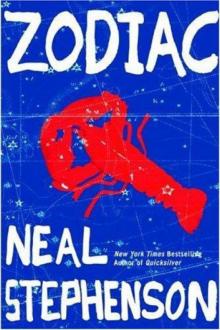 Zodiac: The Eco-Thriller
Zodiac: The Eco-Thriller The Mongoliad: Book One
The Mongoliad: Book One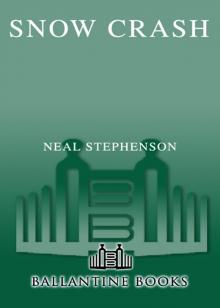 Snow Crash
Snow Crash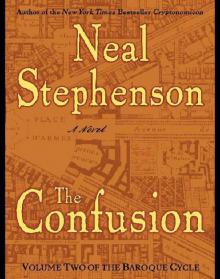 The Confusion: Volume Two of the Baroque Cycle
The Confusion: Volume Two of the Baroque Cycle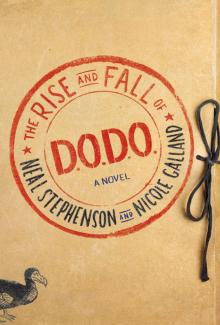 The Rise and Fall of D.O.D.O.
The Rise and Fall of D.O.D.O. The Diamond Age: Or, a Young Lady's Illustrated Primer
The Diamond Age: Or, a Young Lady's Illustrated Primer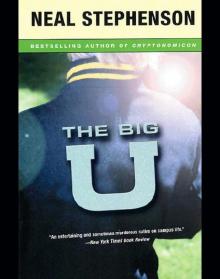 The Big U
The Big U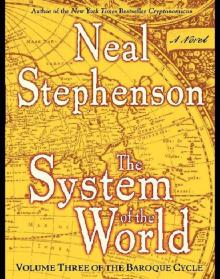 The System of the World: Volume Three of the Baroque Cycle
The System of the World: Volume Three of the Baroque Cycle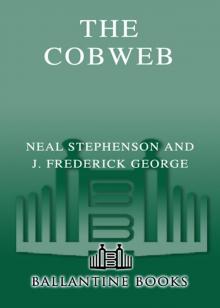 The Cobweb
The Cobweb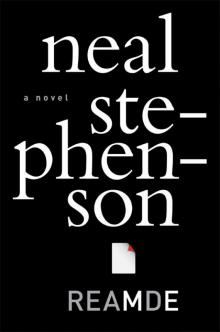 Reamde
Reamde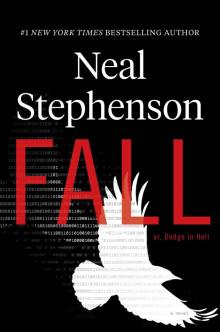 Fall; or, Dodge in Hell
Fall; or, Dodge in Hell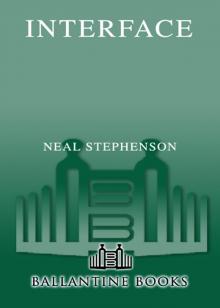 Interface
Interface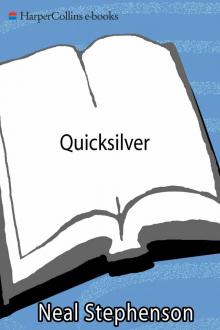 Quicksilver
Quicksilver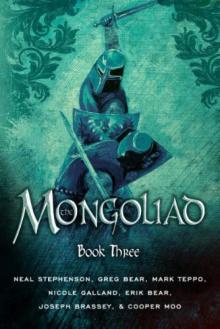 The Mongoliad: Book Three
The Mongoliad: Book Three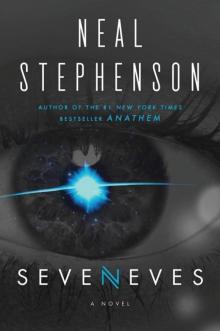 Seveneves
Seveneves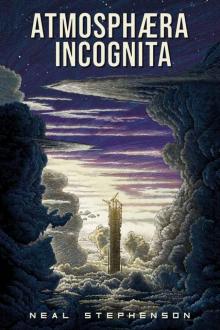 Atmosphæra Incognita
Atmosphæra Incognita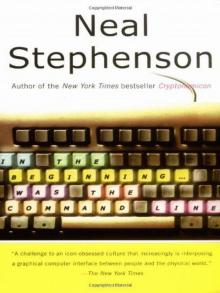 In the Beginning...Was the Command Line
In the Beginning...Was the Command Line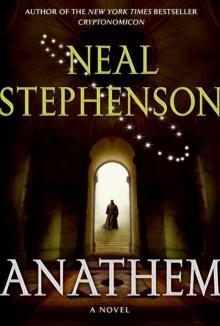 Anathem
Anathem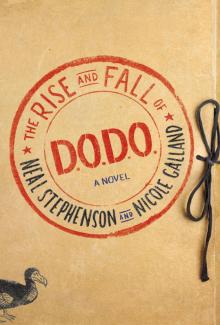 The Rise and Fall of D.O.D.O.: A Novel
The Rise and Fall of D.O.D.O.: A Novel The Mongoliad: Book Two
The Mongoliad: Book Two Diamond Age or a Young Lady's Illustrated Primer
Diamond Age or a Young Lady's Illustrated Primer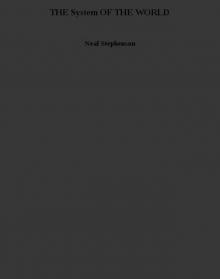 THE System OF THE WORLD
THE System OF THE WORLD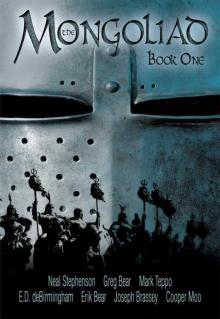 The Mongoliad: Book One tfs-1
The Mongoliad: Book One tfs-1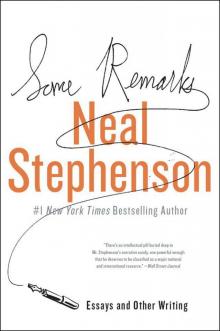 Some Remarks: Essays and Other Writing
Some Remarks: Essays and Other Writing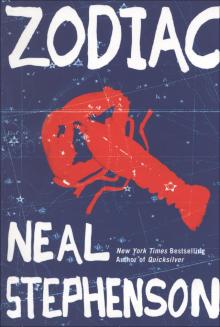 Zodiac
Zodiac Spew
Spew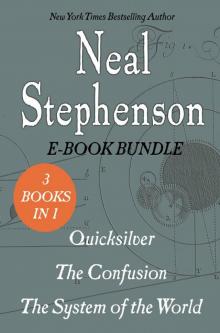 The Baroque Cycle: Quicksilver, the Confusion, and the System of the World
The Baroque Cycle: Quicksilver, the Confusion, and the System of the World The Diamond Age
The Diamond Age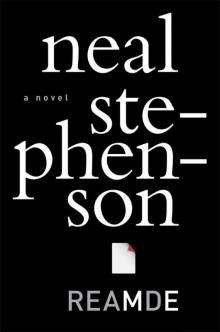 Reamde: A Novel
Reamde: A Novel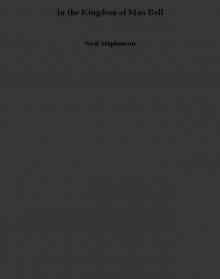 In the Kingdom of Mao Bell
In the Kingdom of Mao Bell Mother Earth Mother Board
Mother Earth Mother Board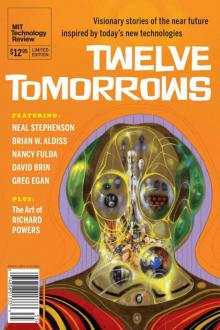 Twelve Tomorrows - Visionary stories of the near future inspired by today's technologies
Twelve Tomorrows - Visionary stories of the near future inspired by today's technologies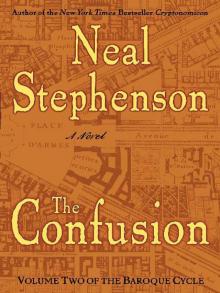 The Confusion
The Confusion The Great Simoleon Caper
The Great Simoleon Caper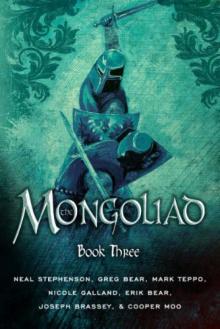 The Mongoliad: Book Three tfs-3
The Mongoliad: Book Three tfs-3